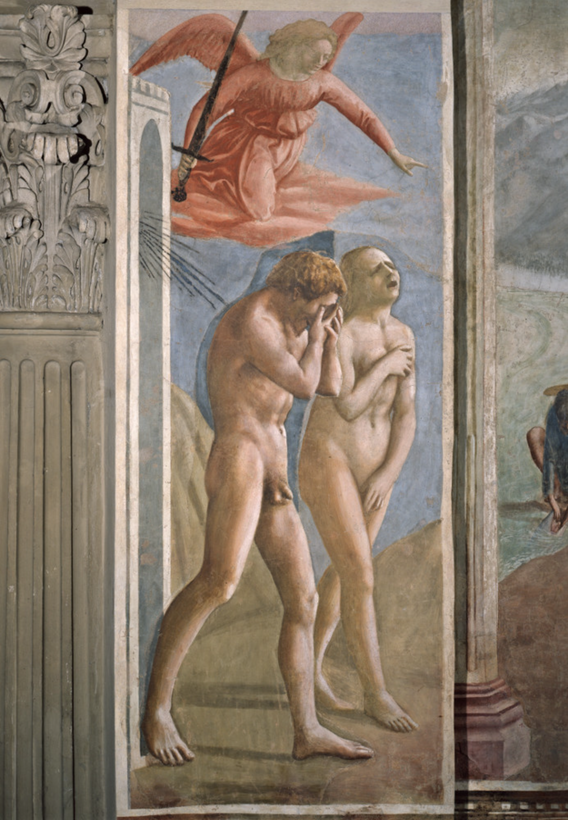To the list of unforgettable art experiences available in Florence we can now add one more: the once-in-a-lifetime opportunity, but only over the next year, for an intimate encounter with the greatest painting in the history of Western art, Masaccio’s Expulsion. This image of Adam and Eve being driven from the Garden of Eden belongs to a celebrated fresco cycle in the Brancacci Chapel in the Church of Santa Maria del Carmine. The paintings are currently in the early stages of a conservation campaign underwritten by the Friends of Florence and the Jay Pritzker Foundation.
Commissioned by the eponymous Felice Brancacci in 1423, the cycle depicts, in the main, scenes from the life of Saint Peter. Masaccio worked on it with another painter, Masolino, completing about half of the frescoes himself. The project was interrupted in 1427, when both left Florence. Masaccio died the following year, at age 26, of unknown causes. Giorgio Vasari, in his famous Lives of the Artists, observed that, had the young painter lived, “he would have produced even greater fruits in his art.” The cycle would be completed 30 years later by Filippino Lippi.
Masaccio (1401–28), along with Filippo Brunelleschi and Donatello, belongs to the great triumvirate of 15th-century Florence. Without the innovations of these three—in painting, architecture, and sculpture, respectively—there would have been no Renaissance art as we know it. Masaccio’s achievement was to represent the human figure with unprecedented naturalism, both physical and psychological, and situate it within a believable, unified, illusionistic space. Predecessors such as Giotto had pioneered this effort, but in the Brancacci paintings, made when he was only in his early 20s, Masaccio brought it to such a pitch that his frescoes, as the critic and connoisseur Bernard Berenson wrote, “at once became… the training school of Florentine painters.” And, he might have added, a pilgrimage point for artists down the generations.
The frescoes wrap the three chapel walls in two bands, with the Expulsion located on the upper left at the entrance. The Brancacci closed last December so a scaffold could be built to allow conservators to conduct preliminary, intense diagnostic tests (the frescoes were last restored in the 1980s) while maintaining public access. Currently, the fresco is on view four days a week, and reservations for 30-minute timed tickets (required) can be made online.
Which is what makes this moment so extraordinary. Seen close-up and at eye level, the Expulsion reveals aspects of itself all but invisible to a viewer at ground level. We can see how, in rendering the angel’s billowing tunic, Masaccio rings changes on a single color, spanning the spectrum from the deepest red to the most delicate pink. And where the brushwork is loose and fluid, there and elsewhere, we sense him racing the clock to apply paint while the plaster surface is still wet, so that the two will bond. Otherwise the colors will dry and flake off.
Above all, we experience as never before the full force of this emotional drama—two naked figures racked with grief and shame. Masaccio’s Expulsion is the supreme rendering of the human condition in art. He uses the language of the body—pose, gesture, facial expression—to reveal the protagonists’ interior state. Nothing is held back, but nothing is overplayed or cheapened by sentimentality. Here Masaccio portrays, succinctly and pointedly, that deep inner pain so familiar to all. We may be looking at Adam and Eve, but we are seeing ourselves. —Eric Gibson
Masaccio’s Expulsion is on view at the Brancacci Chapel in the Church of Santa Maria del Carmine, in Florence
Eric Gibson is the Arts in Review editor of The Wall Street Journal and the author of The Necessity of Sculpture: Selected Essays and Criticism, 1985–2019


 Discover
Discover